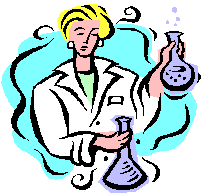 Chemical Reactions Summary
Chemical Reactions Summary
- In a chemical reaction, new substance(s) are always formed.
2.A chemical reaction can be detected when one or more of the following occur;
COLOUR CHANGE
GAS GIVEN OFF
HEAT GIVEN OUT
HEAT TAKEN IN
LIGHT GIVEN OUT
SOUND GIVEN OUT
- An ELEMENT is a substance which cannot be broken down into anything simpler. An element is made of the same type of ATOM.
Elements are listed in the PERIODIC TABLE.
There are approximately 100 elements.
Eg. Chlorine [symbol is Cl]
- A COMPOUND is formed when 2 or more elements chemically join.
- A MIXTURE is formed when 2 or more substances are simply mixed together.
- Electricity is needed to break up a compound. This process is called ELECTROLYSIS.
- GAS TESTS
OXYGEN; relights a glowing taper.
CARBON DIOXIDE; turns limewater milky.
- SPEED OF REACTIONS
PARTICLE SIZE; the smaller the particle size the faster the reaction.
CONCENTRATION; the higher the concentration the faster the reaction.
- CHEMICAL CHANGES; new substance(s) are formed.
PHYSICAL CHANGES; new substance(s) are NOT formed!
Eg. Water turning to ice or water turning to steam are CHANGES OF STATE!
- WORD EQUATIONS
These are used to represent a chemical reaction.
Eg. When magnesium metal reacts with oxygen a white powder called magnesium oxide forms.
Magnesium + Oxygen Magnesium oxide
Magnesium and oxygen are the REACTANTS and magnesium oxide is the PRODUCT.



